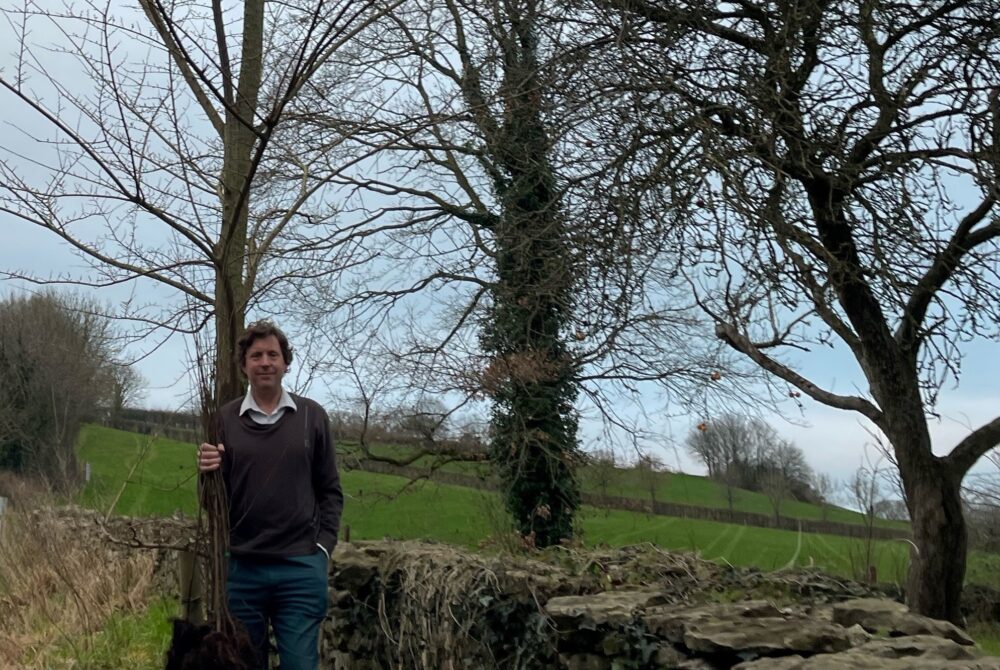A WILTSHIRE farmer is fighting back against a deadly epidemic.
Dutch elm disease (DED) has killed almost all mature elms in Britain, estimated to be between 60 and 100 million.
Peter Shallcross, who farms cattle just outside Tisbury, is leading the campaign to reintroduce resistant trees.
“I became interested in 2016, it just became my passion,” said the self-described elm enthusiast.
“Most of what I do now is sell elms at cost; 700 to Hampshire County Council and some to Gillingham School for their one tree per child project.”
DED is caused by a microfungus infecting the tissue that transports water around the elm.
In an attempt to isolate the pathogen, the tree blocks its water vessels, causing wilting and eventual death.
It’s spread by elm bark beetles, which breed inside infected trees and carry the disease to healthy plants.

Peter Shallcross holding some young Ademuz whips, in front of a six-year-old tree. Photo: Peter Shallcross.
READ MORE: Plant Your Pants this spring – to see what’s going on ‘down there’!
Although named for the Dutch scientists who identified it in the 1920s, the disease has existed in Asia for thousands of years.
As a result, natural selection has created species with a genetic resistance.
These can be bred with US and European varieties to create immune trees suitable for soil types outside of Asia. For example, the Siberian elm has been reproduced with the Japanese elm.
Breeding a range of trees has proven beneficial. The Columella is intolerant to salt, so when 12 were planted on the Portsmouth coast, they were all killed.
But as an urban street tree, it has seen great success, whereas Fiorente struggles in cities and is better suited to rural areas.
The immunity breakthroughs could even inspire the revival of more tree species.
“The science is specific to elms,” Peter, 57, added. “But there are similarities to Ash.”
The reintroduction has also brought back previously lost wildlife, such as the white-letter hairstreak, which had declined by 90%.
The fight is ongoing, but thanks to the work of Peter and other enthusiasts, it could be won.
For more information, or to place an order with Peter Shallcross, visit disease-resistant-elms.org









Leave a Reply